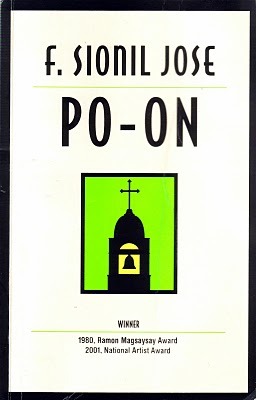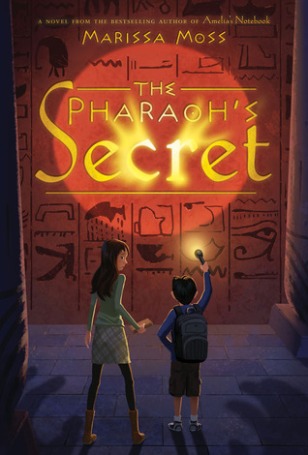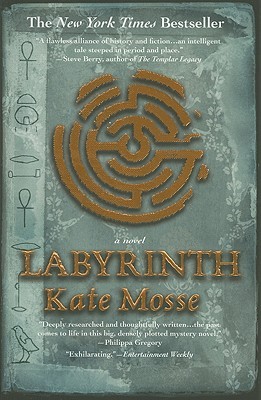Middlesex — Jeffrey Eugenides
What really draw me into this book is the title—Middlesex. Somewhat it already surfaces as a hermaphrodite-y tale to me, as further supplemented by my batty naïveté about the existence of an actual Middlesex locale. Add to that the glistening Pulitzer Prize emblem etched in full sight underneath the title.
So far, I have yet to further delve into Jeffrey Eugenides’ works, Middlesex having been an amazing start for me. Eugenides’ narrative is engaging. It is drenched with intriguing themes, exhibits impeccable vividness, and boasts with flamboyance. Wallowing in this tale, I feel like most of his time was seriously chomp through by his thorough dedication for research. Be that as it may, it reverberated as an effortless voice-over, never sounding like those horrifying medical jargons at all however meticulously he justified the inauguration, progression, and the development of the disease—the 5-alpha-reductase-deficiency. I haven’t sidestepped boredom even so. There were those times when I have to put down the book because of being heavy-eyed over the historical accounts of the Stephanides—the flight escape from Greece, the Greco-Turkish war, the Great Fire of Smyrna, and so on—yet I still managed to pick it up again because there is some imperceptible force in there that pursues for my curiosity and corrupts it (in a good way, of course).
Calliope/Cal very much reminds me of the infamous pop idol Lady Gaga who is rumored to be a hermaphrodite. She clarified however that the said claims were false; proofs were either pathetically photoshopped images or allegedly helpless stolen shots—merely an absurd craze people make to shame poor Gaga. Let us give her a little breather, shall we?
So… I did some readings about the disease because I couldn’t just feign to abolish the subject alone without perceiving its basic fundamentals. A few snippets of idea would content me just fine. (I am not confident enough with my learnings; thus, correct me right away once I committed something wrong.) First off, this so-called 5a-reductase-deficiency is an autosomal recessive disorder; autosomal, meaning that there is no gene coding for 5a-reductase located neither on an X-choromosome nor a Y-choromosome (sex chromosomes); recessive, meaning that to manifest the disease on an offspring, two copies of these recessive genes must be present. Since both Desdemona and Lefty are carrying the gene, poor Callie/Cal unluckily ended up with the disease.
This 5a-reductase codes for enzymes that convert testosterone to dyhidrotestosterone or DHT, which is fundamental for the formation of the male genitalia. For females, it converts progesterone to dihydroprogestorone or DHP. Given that the subject disease cannot convert testosterone to DHT, there’ll be too much testosterone and hardly DHT, creating a decreased level of DHT and high testosterone ratio, at some instances causing the formation of an ambiguous genitalia (crocus). (And too much testosterone in a female causes acne, from what I’ve read from a random source—that doesn’t really have anything to do with this… :/)
A few years back, whilst the subject’s pristinely new to me, I wonder how doctors would specify the gender of a person having both the male’s and the female’s genitals. This puzzling affair of mine transpired after watching a news report on TV, depicting a newborn baby with both genitals. Then a thought struck my mind; of course they could. They just have to assess what sex hormones, chromosomes, gonad, etc. domineers over the other. But in the case of those with 5a-reductase-deficiency, I suppose, mostly are males because DHT affects only genetic males because it has no known role in the female development—from what I’ve read.
To further add, there are models called Androgynous models—they put-on an assumed role in opposition to their real gender. Males posing like females and vice versa. In the case for males, their features—most specifically the face—are more feminine than masculine. This is due to certain potent female hormones but not necessarily prevalent over their male ones. Not to mention that they have a male genitalia which makes them male even so. What’s more, some guys appear gay because of the tone of their voice—the touch of femininity in it. This is also an example. Genetics is such a bizarre thing after all…
Calliope’s transformation to Cal triggered once again another of my so-called “mental deliberations.” Why choose to start anew as a male when being a female is all you’ve ever become? Why choose to complicate matters worse? But then again, putting on a scheming façade is by no means happiness. Why pretend to be someone you’re not?
The whole lot still puzzles me and it’s good, you know. I like it when an issue sinks into me and my curiosity stirs. Overall, I enjoyed the book and I would be looking forward to another Jeffrey Eugenides’ literary ride.
Rating: ★★★★✰





